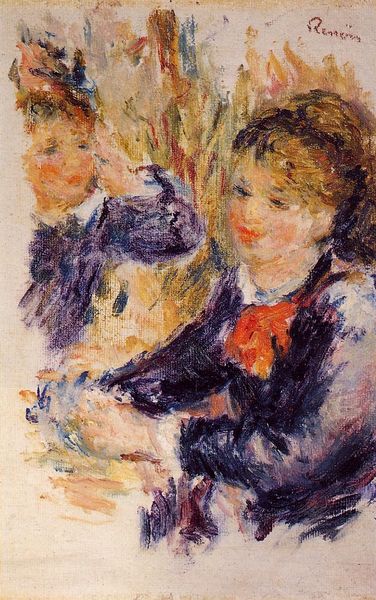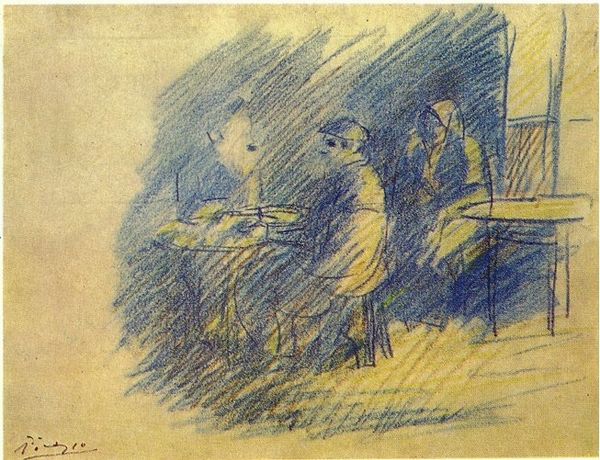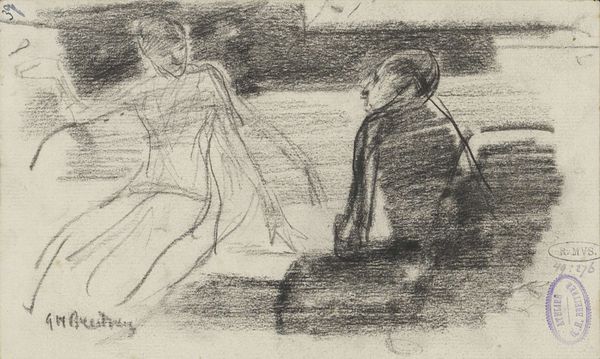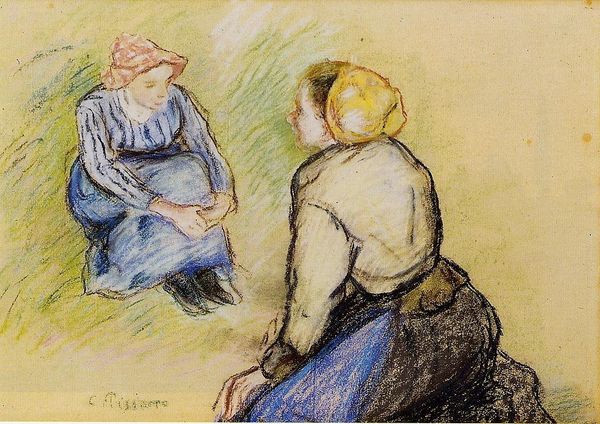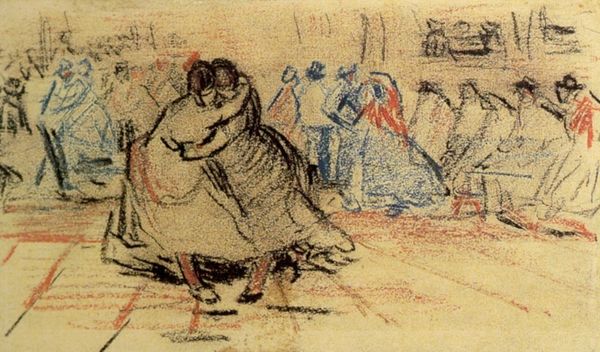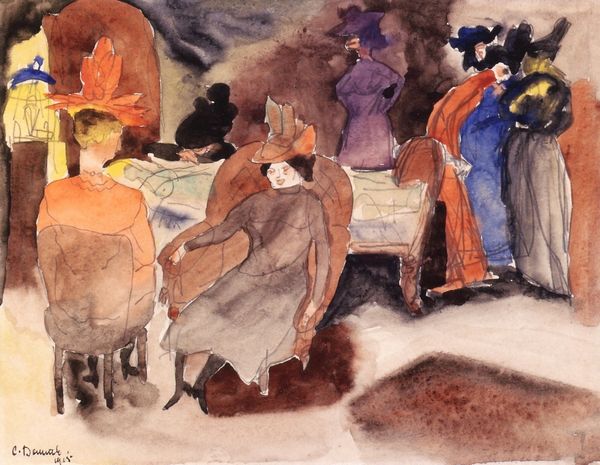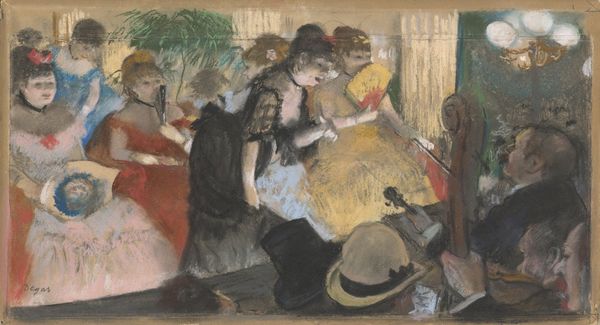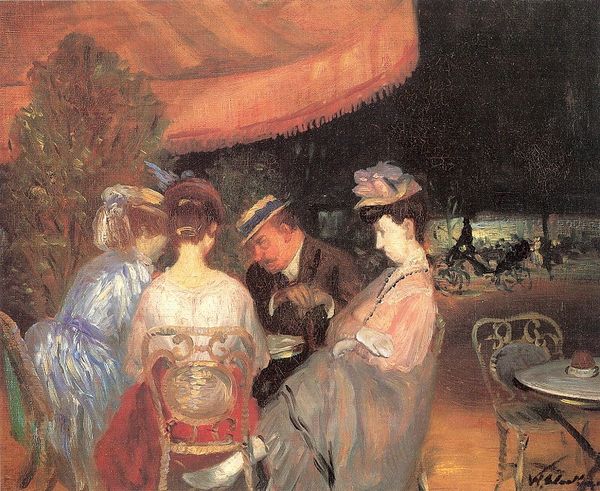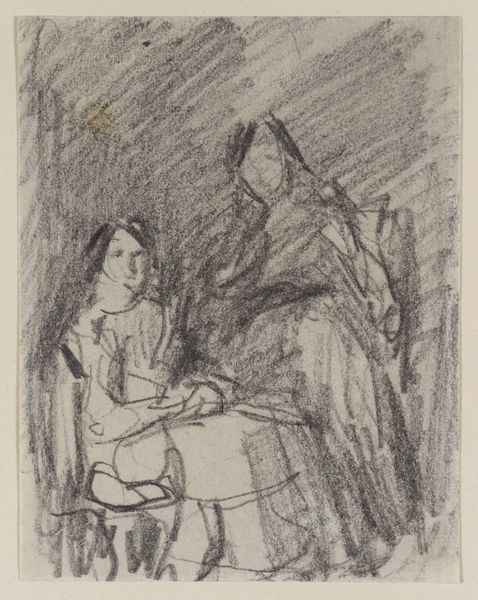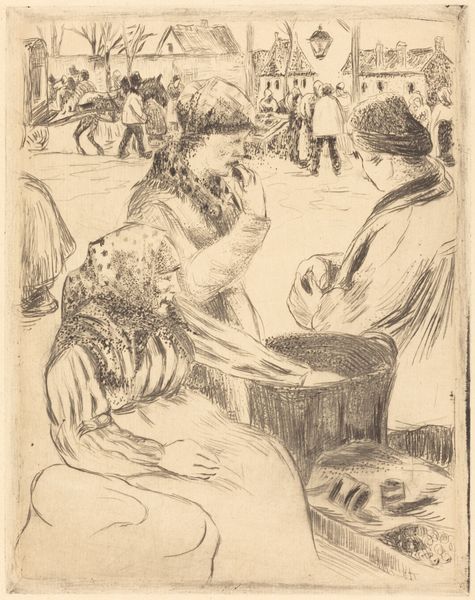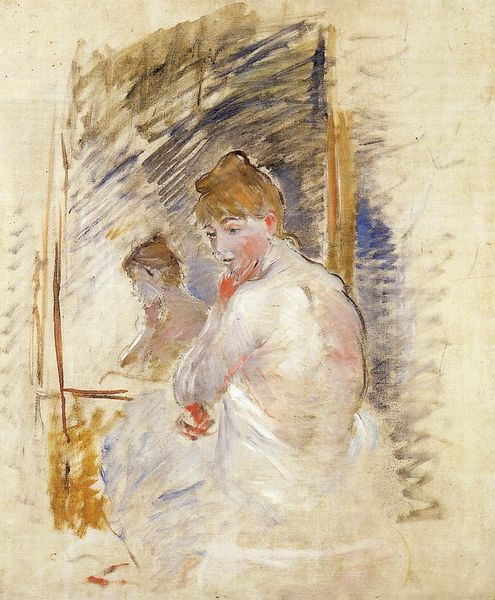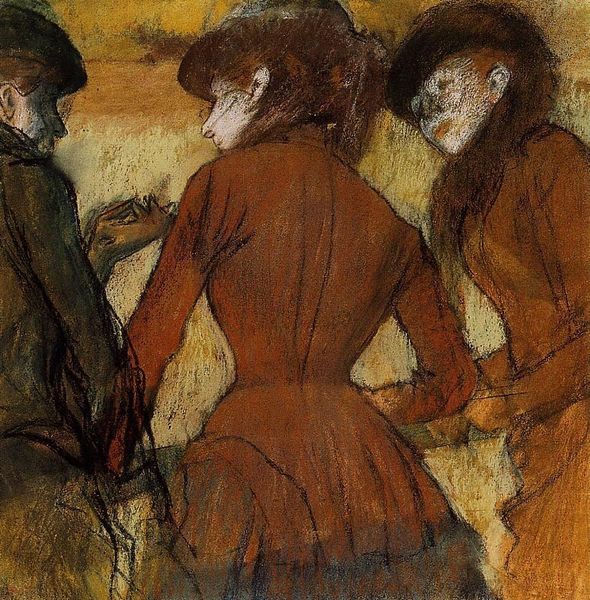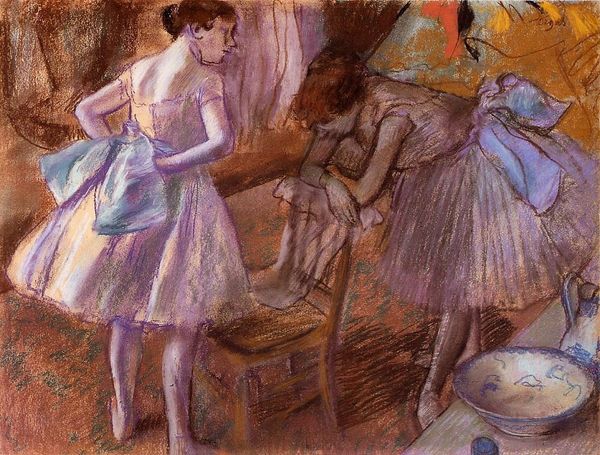
At the Moulin de la Galette 1875
0:00
0:00
pierreaugusterenoir
National Museum of Serbia, Belgrade, Serbia
plein-air, oil-paint
#
portrait
#
impressionism
#
plein-air
#
oil-paint
#
figuration
#
oil painting
#
cityscape
#
genre-painting
Copyright: Public domain
Curator: Here we have Pierre-Auguste Renoir's "At the Moulin de la Galette," created in 1875. This painting offers a snapshot of Parisian life, rendered en plein-air, that is, outside, on the spot, using oil paint. What are your initial thoughts? Editor: Wow, it feels blurry and bright at the same time, like trying to recall a joyful memory from years ago. It's less about the details, more about a general sense of good times, you know? Curator: Precisely. This "genre painting" captures a moment of leisure, reflecting the emergence of the working class's pursuit of recreation in late 19th-century Paris. We see figures gathered at the Moulin de la Galette, a popular Montmartre dance hall, enjoying an afternoon. How do you read this particular setting? Editor: For me, it's dreamlike and a little fragmented. Faces aren't super distinct, the colors bleed... It's like a snippet of overheard conversation rather than a carefully staged scene. Almost like I wasn't really there, or didn't fully perceive what was happening. Curator: Right, Renoir's impressionistic technique seeks to capture the fleeting quality of modern life, moving away from traditional academic painting's emphasis on precise form. In these terms, you are not wrong. One must acknowledge, too, the shifting social dynamics portrayed in this painting: men and women, dressed in finery, freely mingling in this public space, suggest emergent possibilities of leisure and social connection. This work is indicative of those changing class and gender norms. Editor: Yeah, it has a "live and let live" sort of mood about it. What strikes me most is how loose everything is. I get the sense that Renoir felt at ease here, happy even, amongst these characters in their setting. Does it remind you of anyone's paintings, Curator? Curator: Interestingly, one could see here a dialogue with works by Edgar Degas, especially when we consider Degas' portrayals of similar social spaces. However, while Degas might focus on individual alienation, Renoir seems to celebrate communal joy and harmony in spite of this emerging new age of anonymity. What did you think of these new insights? Editor: They have certainly broadened my view. When I leave, I'm going to have a much broader memory of the good times—of Renoir's times, actually.
Comments
No comments
Be the first to comment and join the conversation on the ultimate creative platform.
